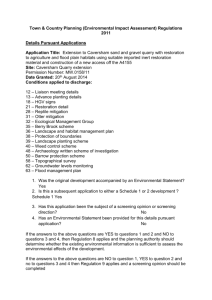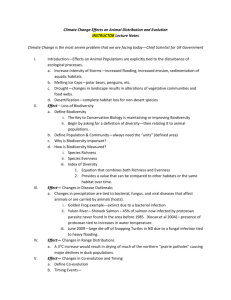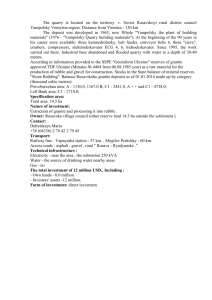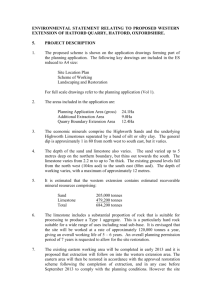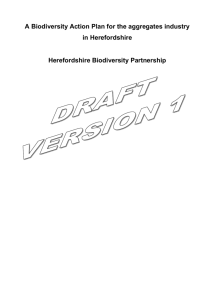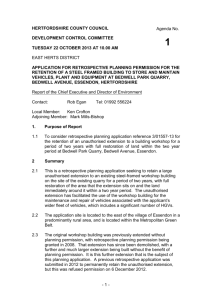Ambitions 2012
advertisement
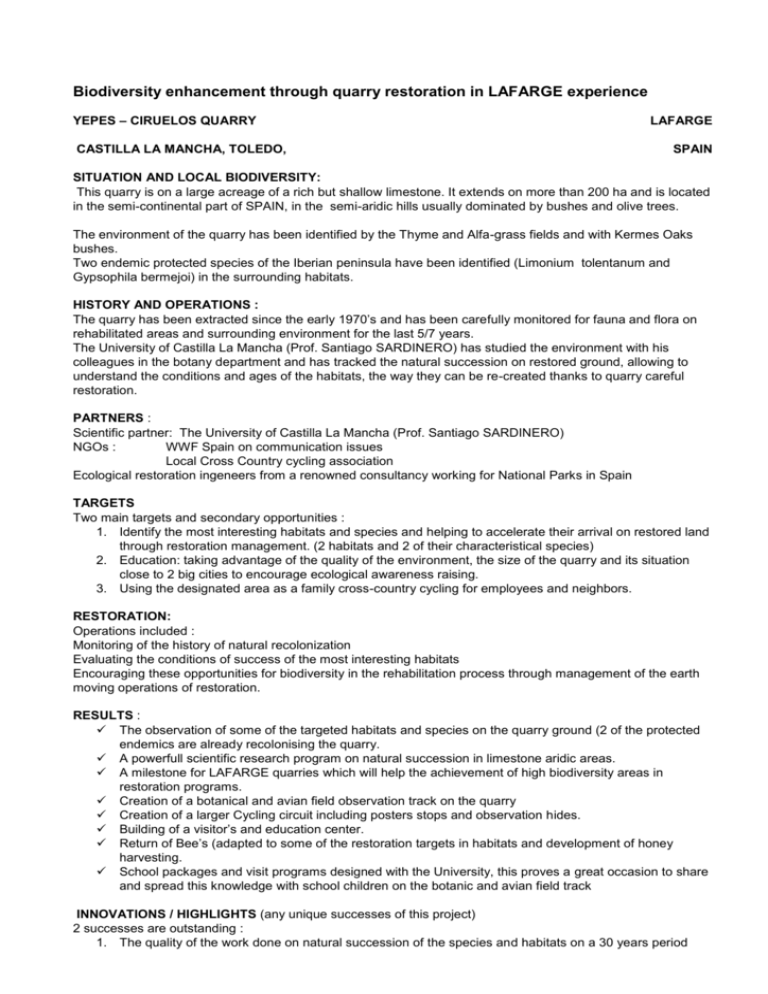
Biodiversity enhancement through quarry restoration in LAFARGE experience YEPES – CIRUELOS QUARRY CASTILLA LA MANCHA, TOLEDO, LAFARGE SPAIN SITUATION AND LOCAL BIODIVERSITY: This quarry is on a large acreage of a rich but shallow limestone. It extends on more than 200 ha and is located in the semi-continental part of SPAIN, in the semi-aridic hills usually dominated by bushes and olive trees. The environment of the quarry has been identified by the Thyme and Alfa-grass fields and with Kermes Oaks bushes. Two endemic protected species of the Iberian peninsula have been identified (Limonium tolentanum and Gypsophila bermejoi) in the surrounding habitats. HISTORY AND OPERATIONS : The quarry has been extracted since the early 1970’s and has been carefully monitored for fauna and flora on rehabilitated areas and surrounding environment for the last 5/7 years. The University of Castilla La Mancha (Prof. Santiago SARDINERO) has studied the environment with his colleagues in the botany department and has tracked the natural succession on restored ground, allowing to understand the conditions and ages of the habitats, the way they can be re-created thanks to quarry careful restoration. PARTNERS : Scientific partner: The University of Castilla La Mancha (Prof. Santiago SARDINERO) NGOs : WWF Spain on communication issues Local Cross Country cycling association Ecological restoration ingeneers from a renowned consultancy working for National Parks in Spain TARGETS Two main targets and secondary opportunities : 1. Identify the most interesting habitats and species and helping to accelerate their arrival on restored land through restoration management. (2 habitats and 2 of their characteristical species) 2. Education: taking advantage of the quality of the environment, the size of the quarry and its situation close to 2 big cities to encourage ecological awareness raising. 3. Using the designated area as a family cross-country cycling for employees and neighbors. RESTORATION: Operations included : Monitoring of the history of natural recolonization Evaluating the conditions of success of the most interesting habitats Encouraging these opportunities for biodiversity in the rehabilitation process through management of the earth moving operations of restoration. RESULTS : The observation of some of the targeted habitats and species on the quarry ground (2 of the protected endemics are already recolonising the quarry. A powerfull scientific research program on natural succession in limestone aridic areas. A milestone for LAFARGE quarries which will help the achievement of high biodiversity areas in restoration programs. Creation of a botanical and avian field observation track on the quarry Creation of a larger Cycling circuit including posters stops and observation hides. Building of a visitor’s and education center. Return of Bee’s (adapted to some of the restoration targets in habitats and development of honey harvesting. School packages and visit programs designed with the University, this proves a great occasion to share and spread this knowledge with school children on the botanic and avian field track INNOVATIONS / HIGHLIGHTS (any unique successes of this project) 2 successes are outstanding : 1. The quality of the work done on natural succession of the species and habitats on a 30 years period 2. The network of opportunities united thanks to the dynamism of local team which conducted to the creation of a large education and biodiversity area with several attractions allowing to explain simply and in a pleasant manner the stakes of biodiversity.

